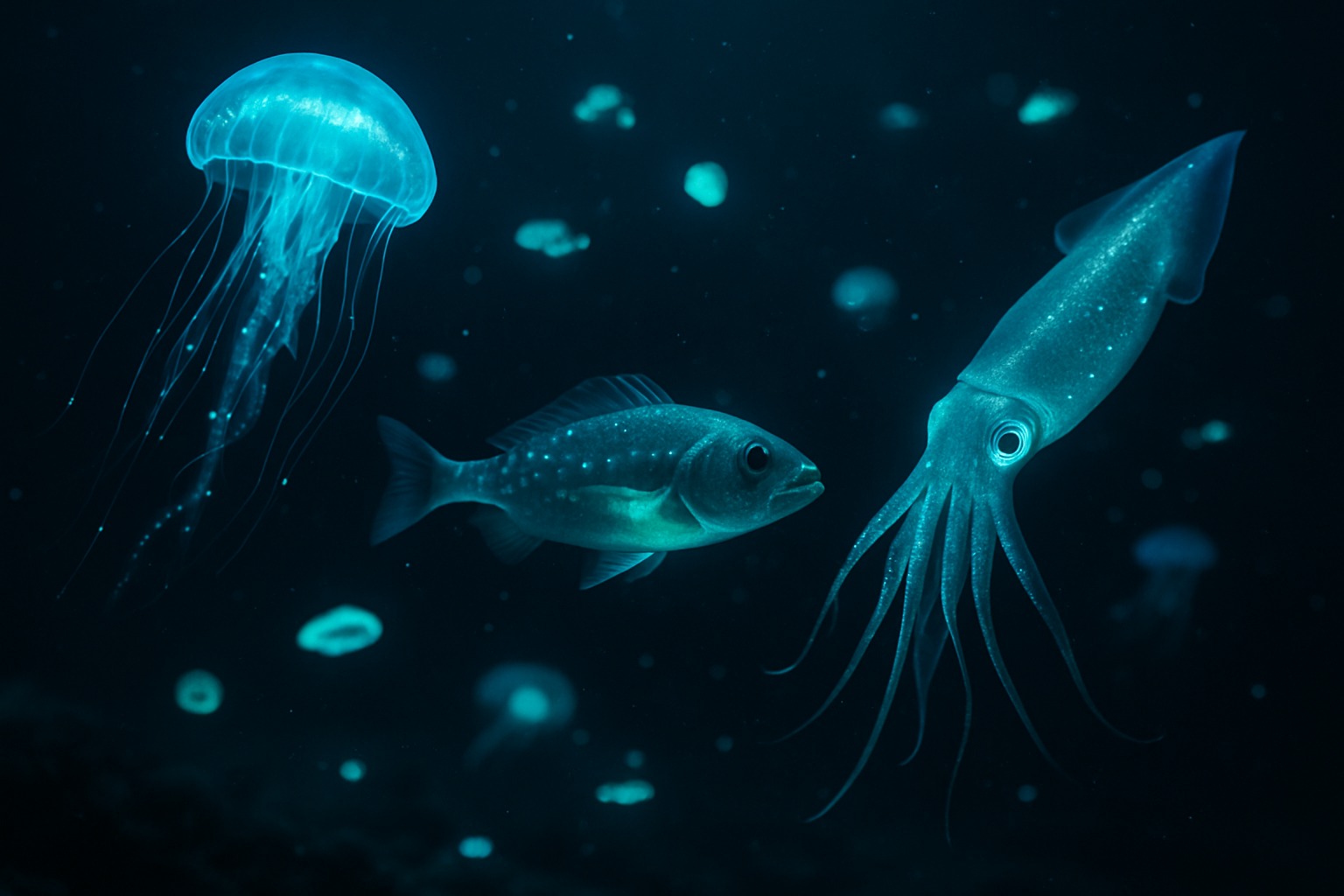The Enigmatic World of Bioluminescent Marine Life
Imagine diving into the depths of a moonlit ocean, surrounded by a mesmerizing light show created by living organisms. This is the captivating realm of bioluminescent marine life, where creatures produce their own light through complex biological processes. From tiny plankton to deep-sea fish, these luminous beings have fascinated scientists and nature enthusiasts for centuries, offering a glimpse into the hidden wonders of our planet's oceans.

The Chemistry of Light: How Marine Organisms Glow
At the heart of bioluminescence lies a complex chemical reaction. Most marine organisms produce light through the interaction of a light-emitting molecule called luciferin and an enzyme called luciferase. When these compounds mix with oxygen, they create a chemical reaction that releases energy in the form of light. Different species have evolved unique variations of this process, resulting in a diverse array of colors and intensities of bioluminescence.
Diverse Luminous Life: From Plankton to Predators
Bioluminescence is found across a wide range of marine organisms, from microscopic plankton to large predatory fish. Dinoflagellates, tiny single-celled organisms, are responsible for the sparkling blue waves often seen along coastlines. In deeper waters, anglerfish use bioluminescent lures to attract prey, while firefly squid create dazzling light displays during mating season. Even some sharks, like the kitefin shark, have been discovered to possess bioluminescent capabilities, highlighting the prevalence of this adaptation in marine ecosystems.
Survival Strategies: The Functions of Bioluminescence
Marine organisms have evolved to use bioluminescence for various purposes crucial to their survival. Some employ it as a defense mechanism, creating sudden bursts of light to startle predators or using counterillumination to blend in with the surrounding light from above. Others use bioluminescence to attract mates, with intricate light patterns serving as a form of communication. Predatory species often use their glow to lure unsuspecting prey, while some organisms form symbiotic relationships with bioluminescent bacteria for mutual benefit.
Shedding Light on Marine Research and Conservation
The study of bioluminescent marine life has far-reaching implications for marine research and conservation efforts. Scientists are using bioluminescent organisms as indicators of ocean health, as changes in their populations can signal shifts in marine ecosystems. Additionally, research into bioluminescence has led to groundbreaking applications in fields such as medicine and biotechnology. For instance, green fluorescent protein (GFP), originally discovered in a bioluminescent jellyfish, has revolutionized cellular imaging techniques.
The Future of Bioluminescence: From Ocean Depths to Human Innovation
As our understanding of bioluminescence grows, so does its potential for practical applications. Researchers are exploring ways to harness bioluminescent processes for sustainable lighting solutions, potentially reducing our reliance on electricity. In the realm of medical diagnostics, bioluminescent markers are being developed to detect specific diseases or track the effectiveness of treatments. These innovations showcase the profound impact that studying marine bioluminescence can have on various aspects of human life and technology.
By delving into the enigmatic world of bioluminescent marine life, we not only uncover the secrets of nature’s light show but also gain valuable insights that could shape the future of scientific discovery and environmental conservation. As we continue to explore the depths of our oceans, the glowing wonders of bioluminescent organisms serve as a reminder of the vast, unexplored potential that lies beneath the waves, waiting to be illuminated by human curiosity and ingenuity.





